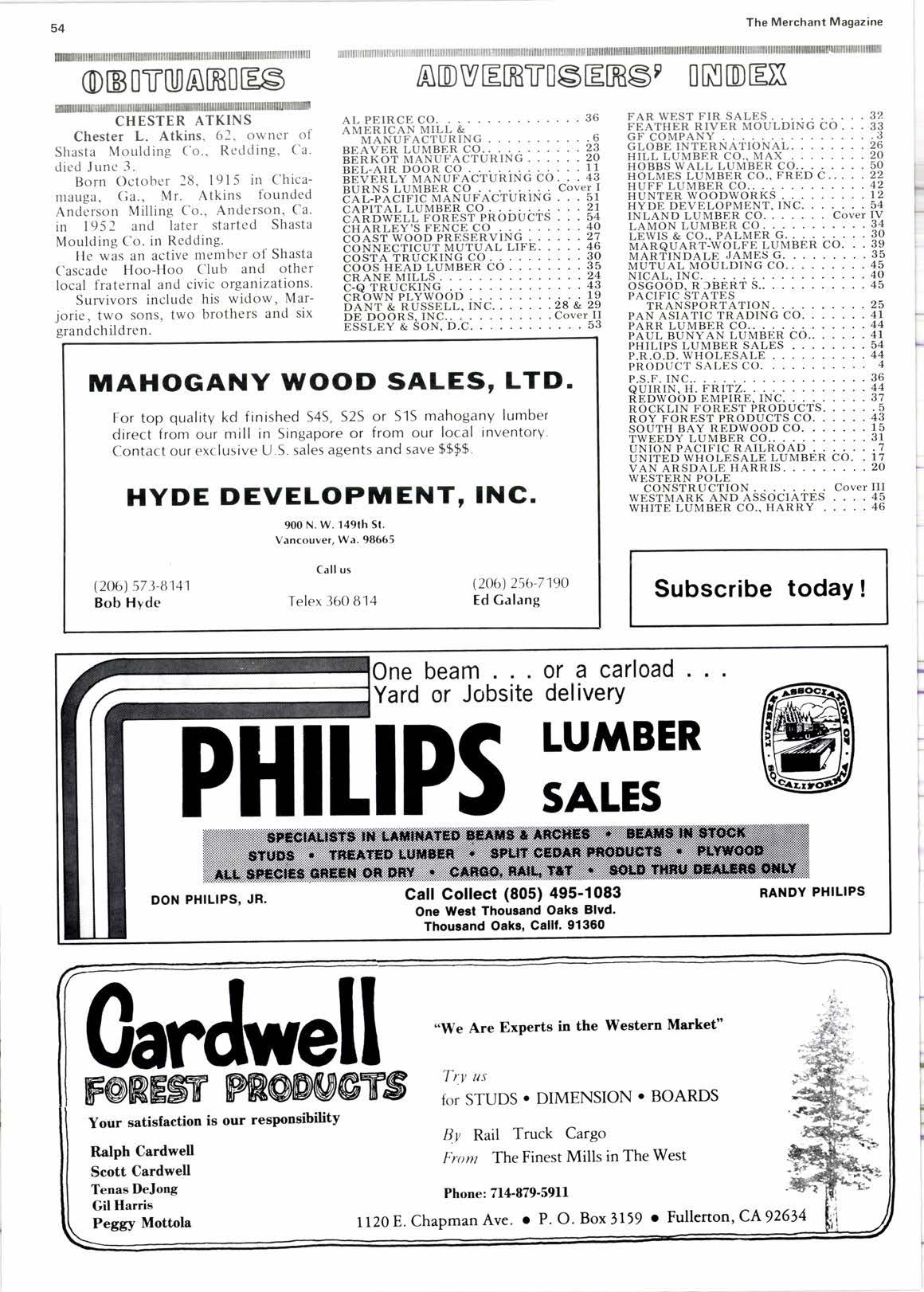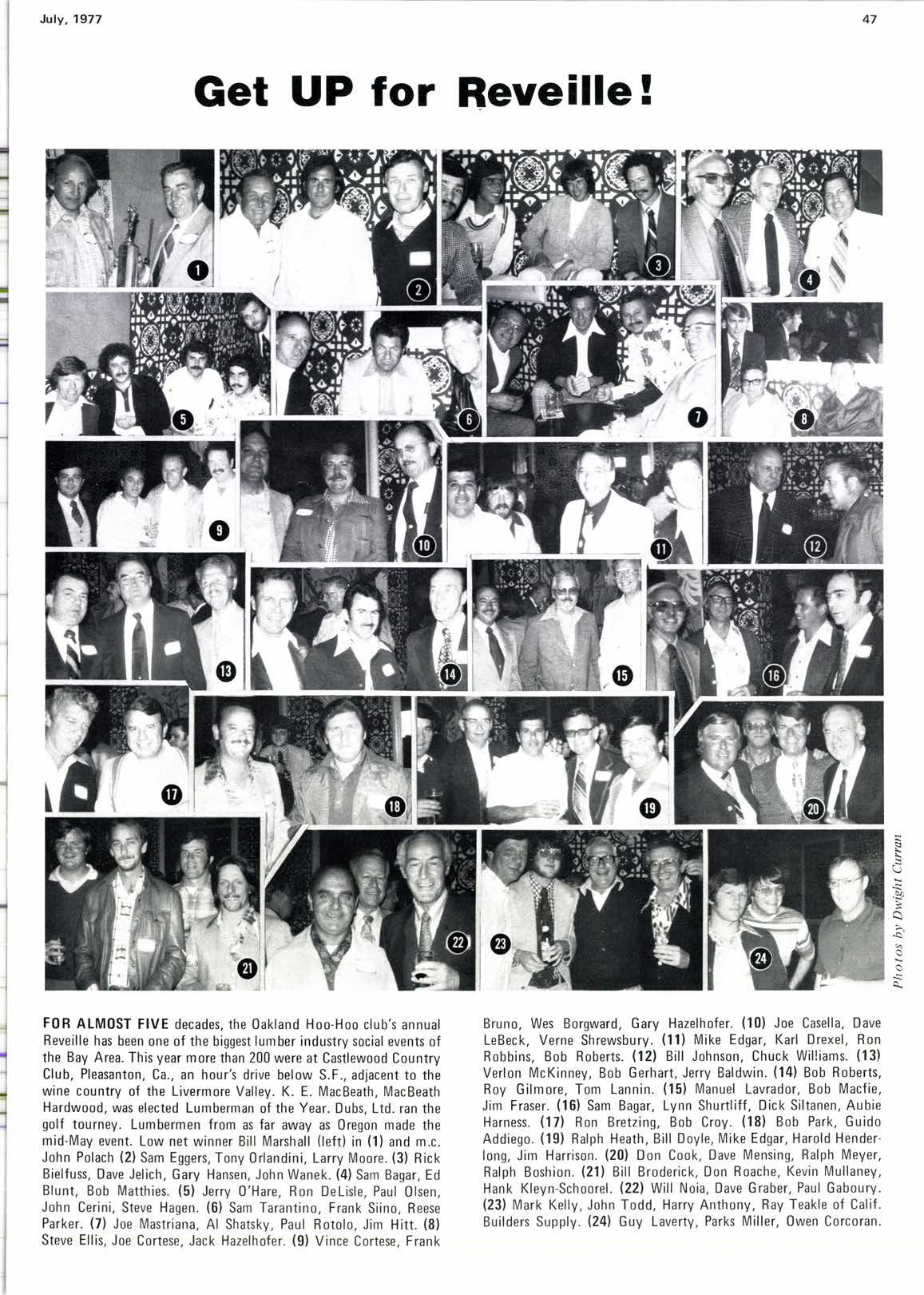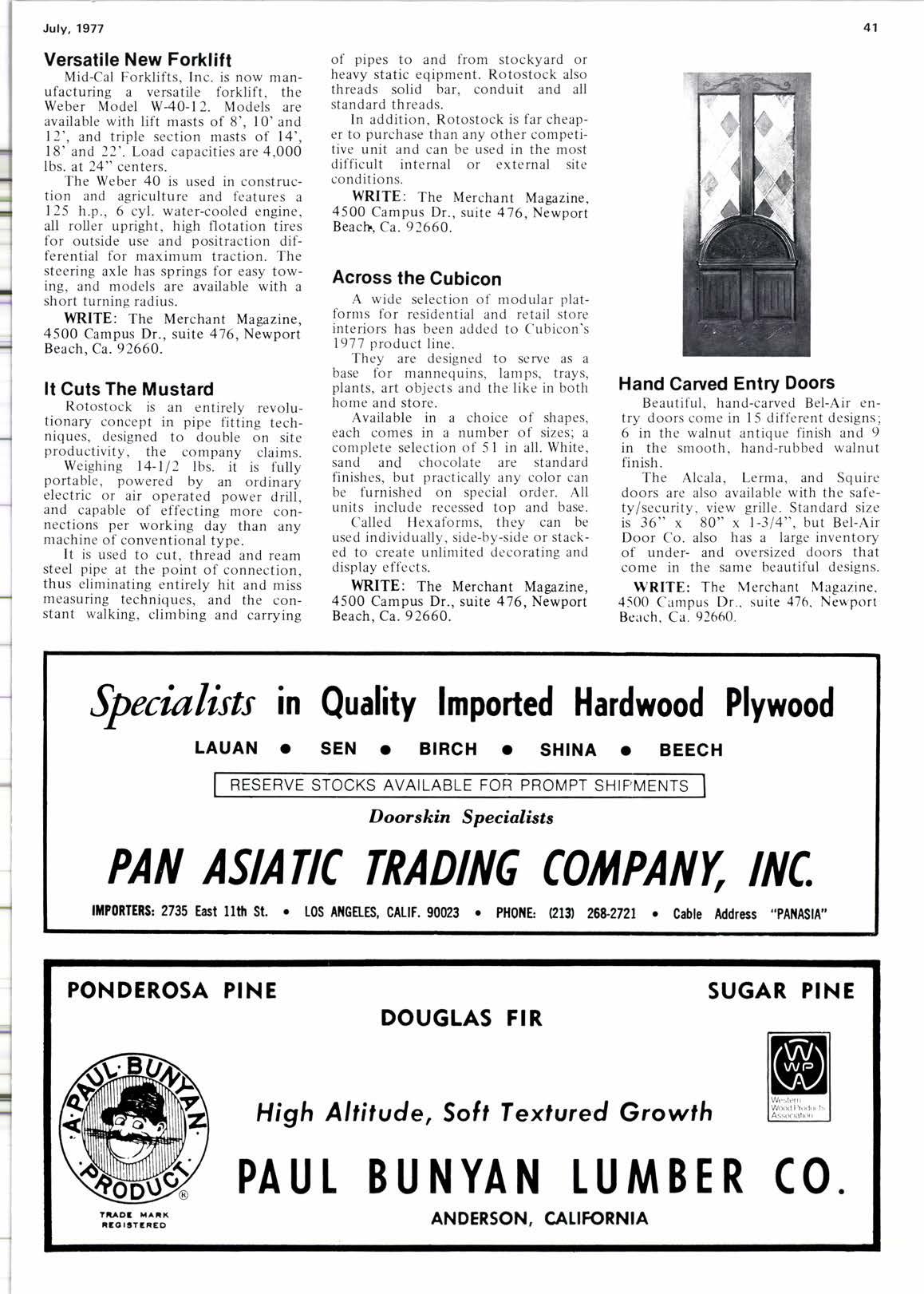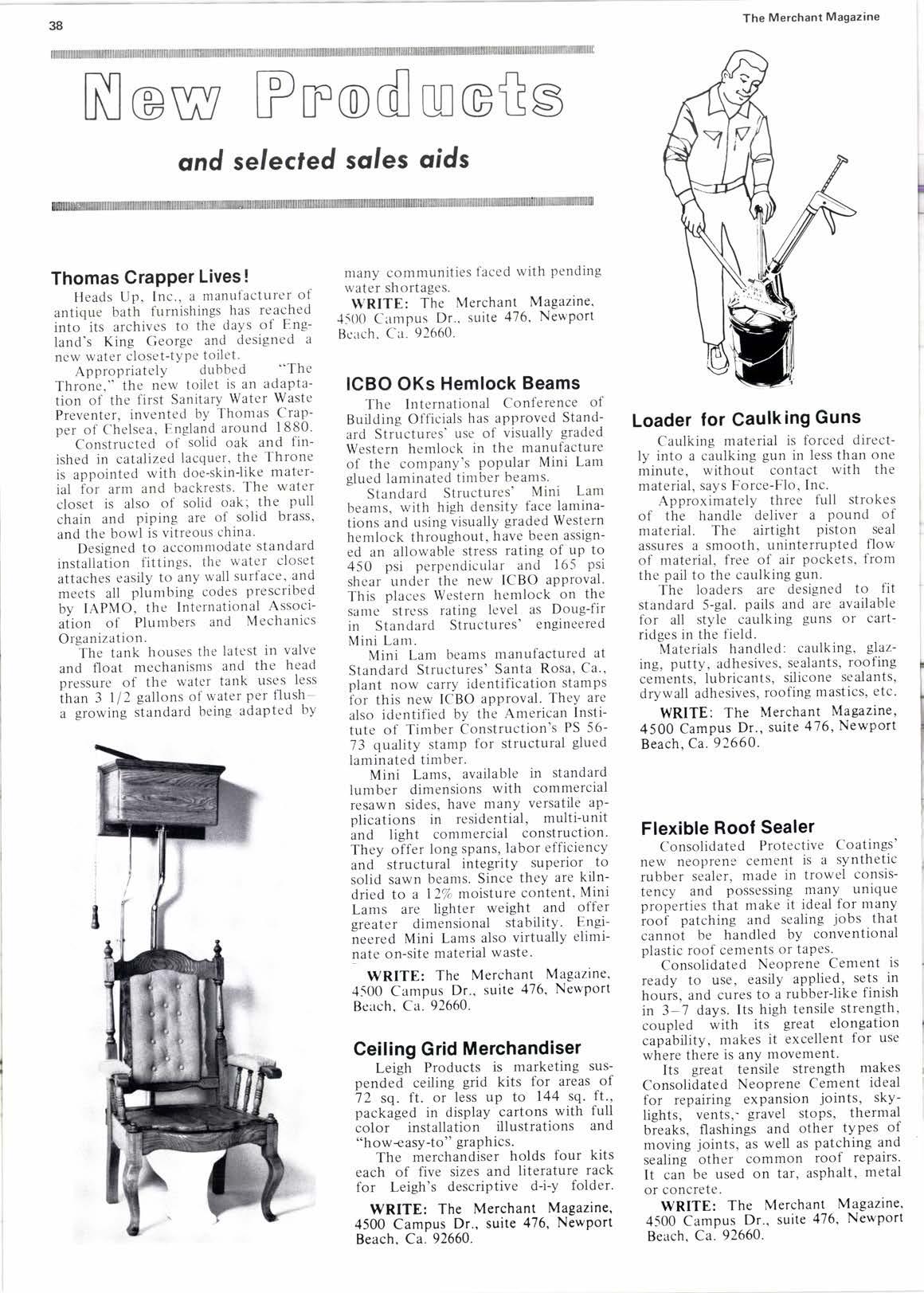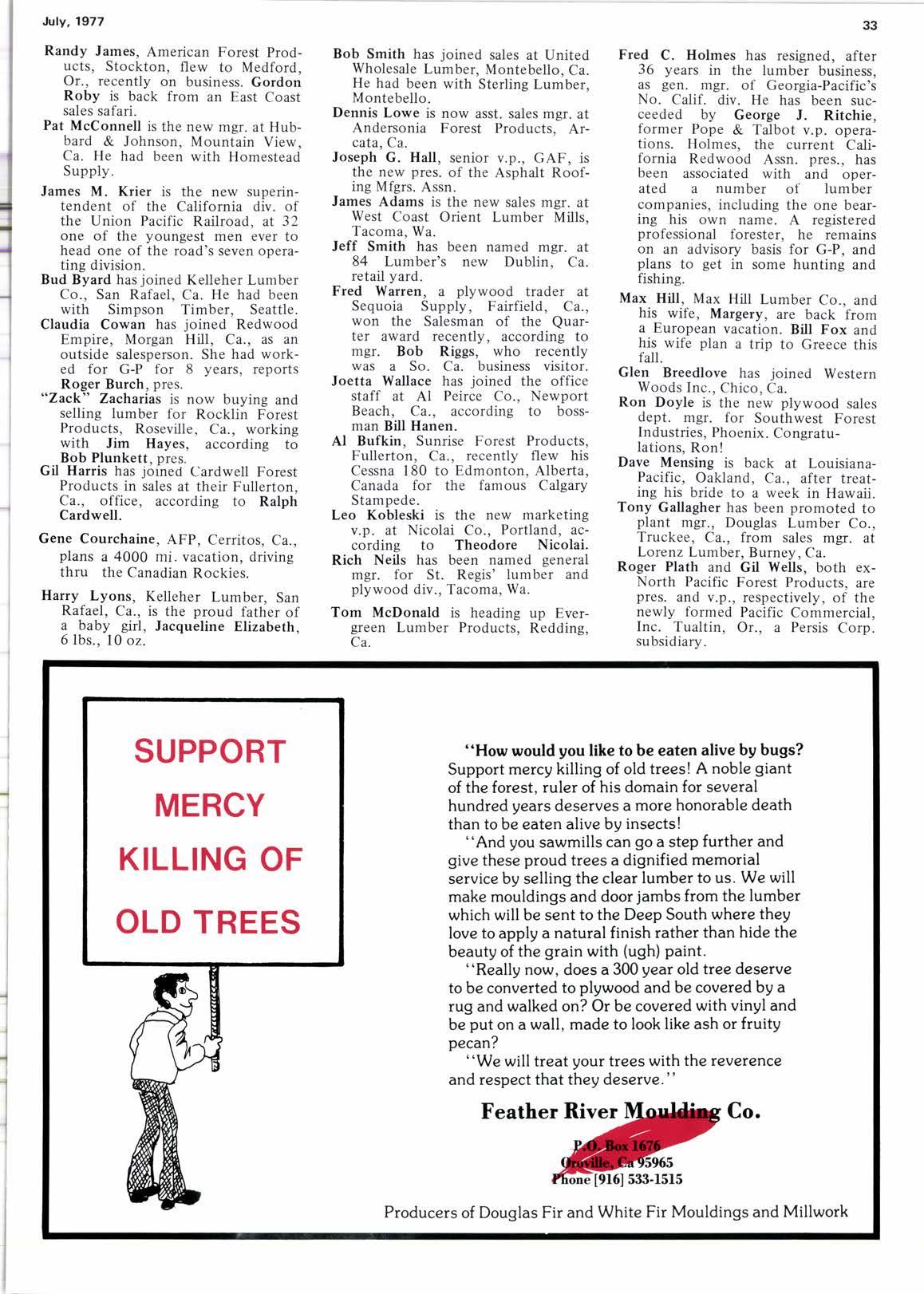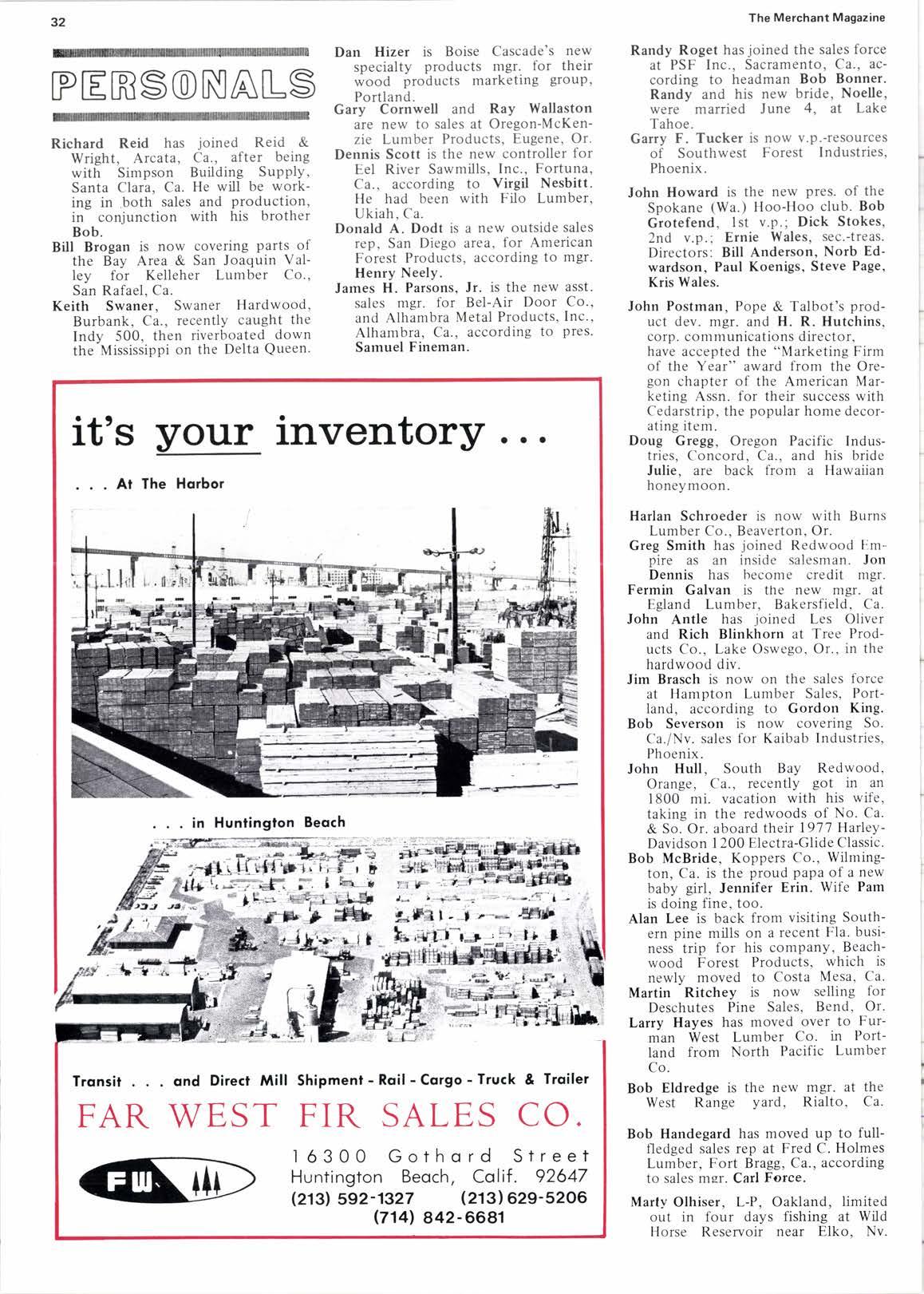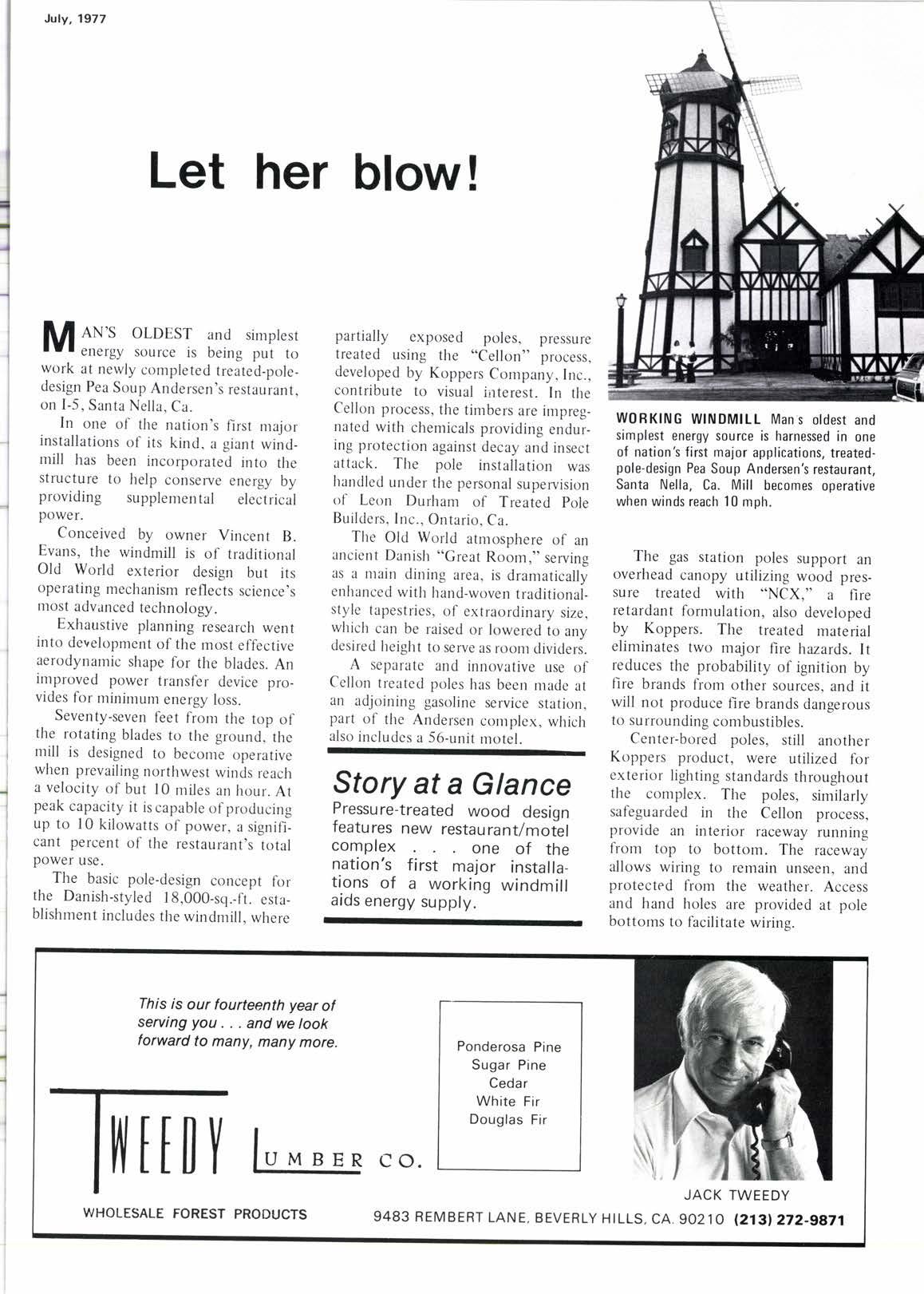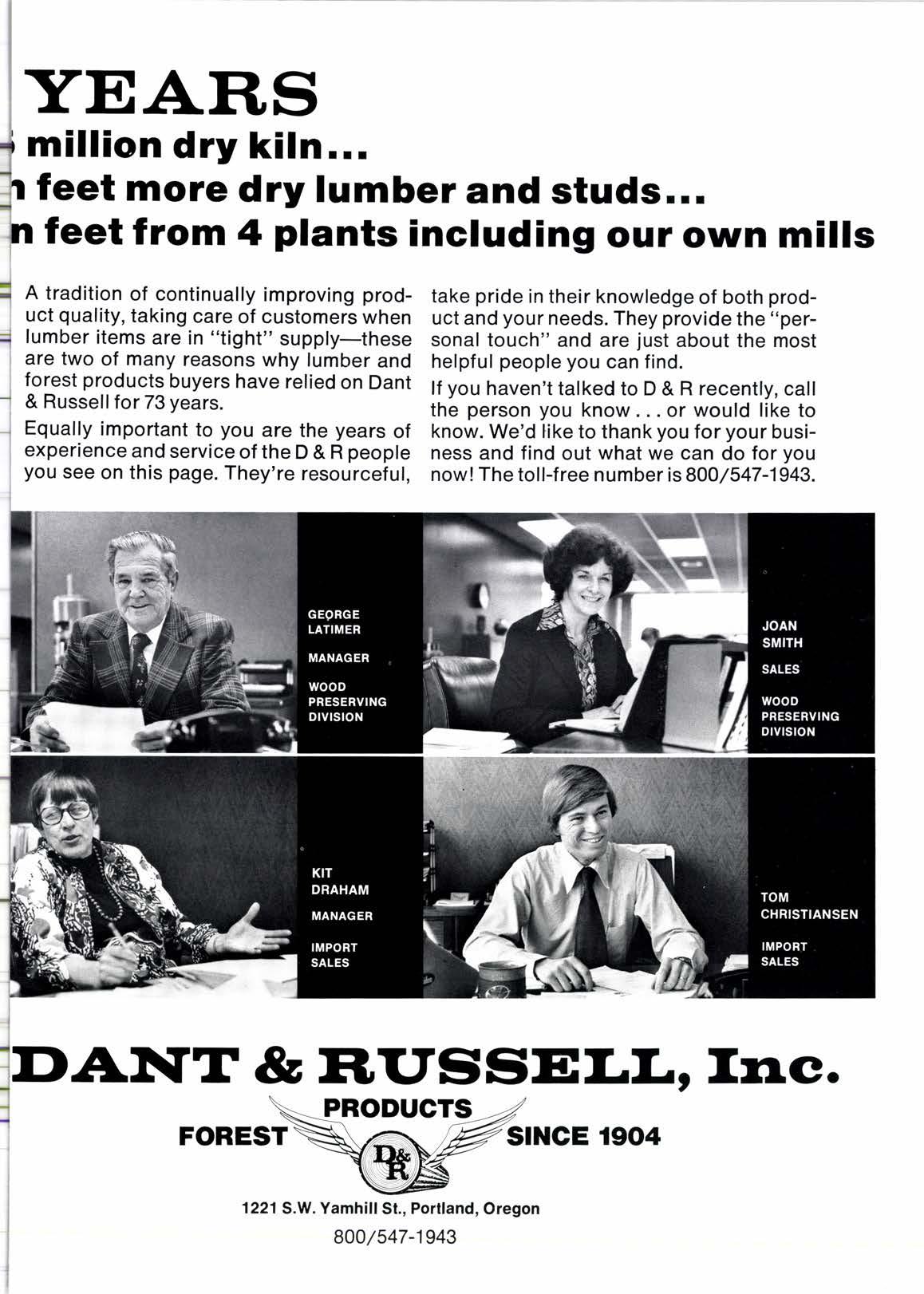
2 minute read
THE ARIZONA
SGtrNE
By FRANK DAVI executive vice president
I f ls TIME the Arizona Lumber I and Builders Supply Association and lts members think about building a "Wood Center".
The purpose would be to incorporate in the building of the association office, a Resources Training Center and a Consumer Wood Information Center.
With energy costs expected to increase 600% in the next decade, if there was ever a time in history in Arizona for wood to emerge as the predominate building material in home construction, the time is now! Even if the lumber dealers do not do anything to promote wood. the consumer is now, and more so in the years to come, asking for homes that conserve energy. The wood home is the answer for maximum savings of energy.
Therefore, a "Wood Center" should be one of the main projects of our association in order to provide a "Consumer Wood Information Center."
The consumer could view the beautiful aspects of wood products, select literature on wood projects and information on energy saving building techniques.
Secondly, encompassed in the building would be a Resource Training Center to accommodate training classes in all aspects of our industry including sales, product knowledge, etc.
I believe our industry members will meet the challenge and move forward in the near future to build the "Wood Center".
The Product Show by the manufacturers and wholesalers will be educational and enjoyable. The show will be open on Saturday and Sunday this year to accommodate the many lumber yard employees who may not be able to get away during the week-take advantage of this!
Show dates are Sept. l0-13, at the Brown Palace Hotel. Denver.
Do you know anyone who needs to improve his salesmanship? If so, I think we have just exactly what they need.
We will be publishing in our monthly bulletin the famous Smooth Selling series by George Kahn. We will run l2 of the series starting with "The Salesman is a V.l.P."
Next month we will have "Are You a Salesman"-qualifications needed to sell - planning and organizing are stressed. I'm sure you don't need this stuff, but if you know someone who does, do them a favor and encourage them to studv this series.
Freight Rate Fight
(Conttnued Jiom page L4 )
The market shift of Official Territory traffic has had a dramatic impact on the railroads. The Western lumber traffic loss from 1967 to 1976 of 1,304 million board feet equates to approximately 30,000 carloads of Iumber traffic annually which no longer moves to the Northeast.
If one conservatively figures the per car revenue of a load of Western lumber to the Official Territory to be $2.000. then the traffic loss for 1976 alone amounts to $60.000.000.
When coupled with the revenue losses for the nine years prior to 19'76, it becomes apparent that the maintenance of lumber market relationships should be given top prior- ity status by railroad pricing officers. The amount of our market loss taken over by Southern lumber production moves primarily from the South by motor carrier.
Any additional cost oI snlpplng Dy rail from the West without an accompanying increase from the South will result in further market diversion.
Cancellation of the blanket rate will also cause substantial volumes of Western lumber traffic to shift to the motor carrier mode. At present, the blanket rate has been an effective rate barrier for the railroads in preventing irregular route motor carriers from shipping beyond the Western perimeter of Official Territory. Elimination of the blanket rate will permit trucks to pour into Official Territorv.
Motor carriers offer advantages that are not generally recognized when comparing rate levels with rail carriers. Motor carriers can transport lumber in smaller quantities with a faster transit time. This allows receivers to reduce inventories and reorder more frequently.
When considering today's high (Please turn to page 46 )

